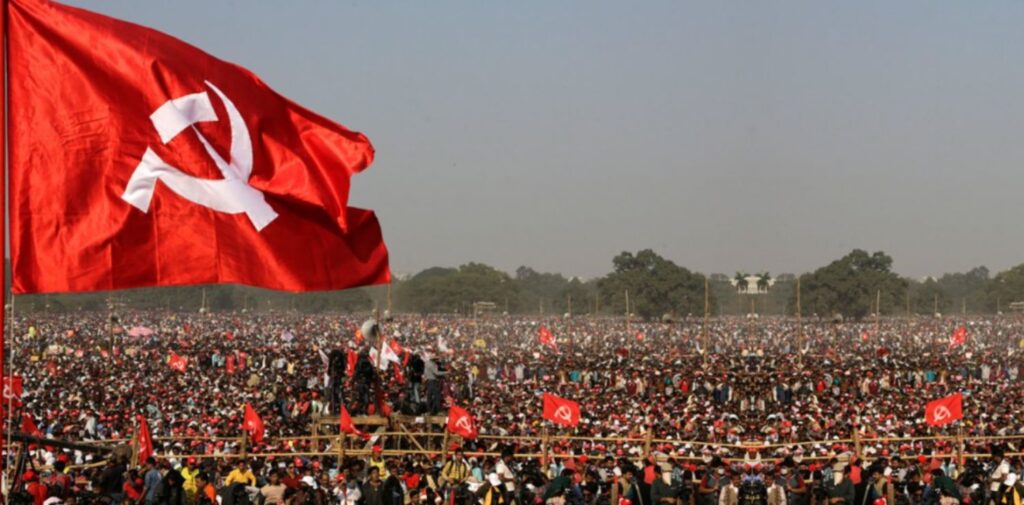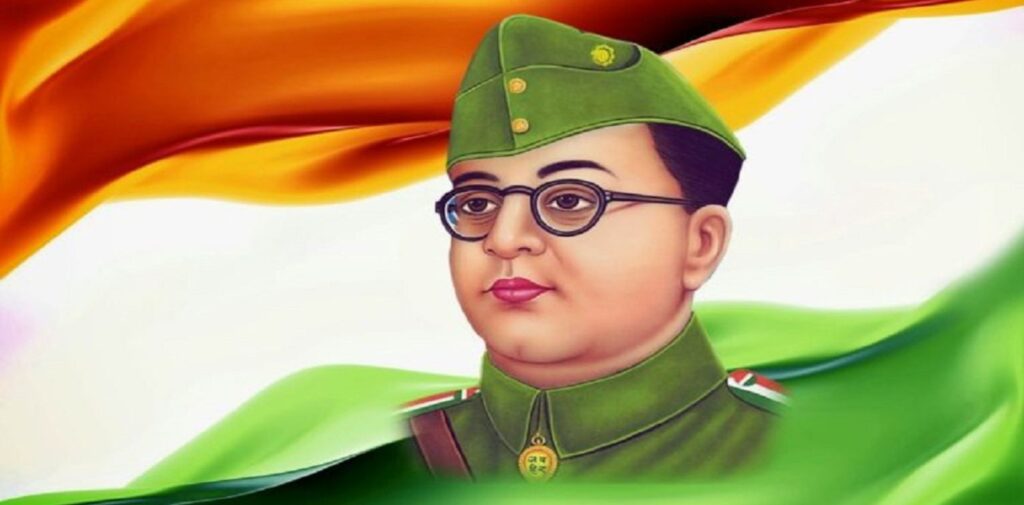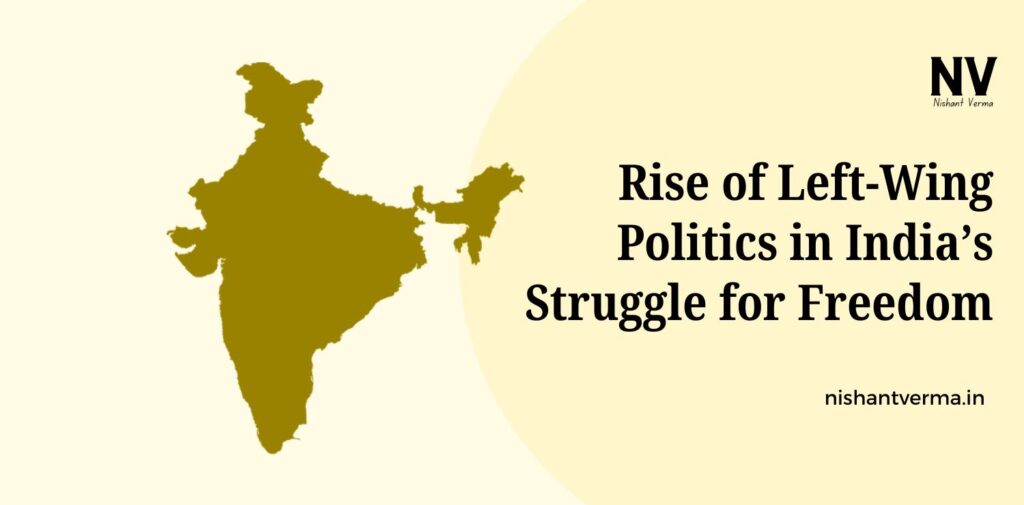India’s freedom struggle was not just about the fight for independence from British colonial rule; it was also a battle for justice, equality, and social reforms. Alongside the non-violent and constitutional efforts led by figures like Mahatma Gandhi, a more radical, left-wing movement emerged in India’s struggle for freedom. This left-wing movement, which focused on socialism, communism, and the rights of workers and peasants, played a significant role in shaping the political landscape of India during the colonial period.
The rise of left-wing politics in India was influenced by both the growing dissatisfaction with the British rulers and the need for a more equitable society. The left-wing movement was characterized by its opposition to British imperialism and its advocacy for radical social and economic changes. Let’s explore how left-wing politics emerged in India, the key figures involved, and the impact it had on the Indian freedom movement.
Early Influence of Left-Wing Ideas
Left-wing politics in India began to take shape in the early 20th century, inspired by global developments, particularly the Russian Revolution of 1917. The rise of communism and socialism in Europe, along with the success of the Bolshevik Revolution in Russia, encouraged Indian intellectuals and activists to think about alternative political ideologies. They began to question not only British rule but also the social and economic inequalities in Indian society.
As the Indian National Congress (INC) led by Mahatma Gandhi and Jawaharlal Nehru focused on non-violent resistance and political reforms, a group of young and radical thinkers emerged, inspired by Marxist ideologies. They were determined to address the issue of poverty, exploitation, and social injustice, which they believed could not be solved through mere constitutional reforms. These left-wing thinkers called for a revolution to overthrow not just British rule but also the exploitative social systems within India.

Formation of the Communist Party of India
One of the most significant developments in the rise of left-wing politics was the formation of the Communist Party of India (CPI) in 1925. The CPI was born out of the growing influence of Marxist ideas in India and the need for a more radical approach to the independence movement. The formation of the CPI was also influenced by the success of the Russian Revolution, which had shown the potential of a workers’ revolution to overthrow imperialist powers.
The Communist Party, under leaders like P.C. Joshi, and later, B.T. Ranadive, grew in popularity, particularly among the working class, peasants, and intellectuals. They advocated for the rights of the working class, better wages, land reforms for peasants, and the complete dismantling of the capitalist system. They called for a revolution that would not only free India from British rule but also establish a socialist society where wealth would be distributed more equally.
The CPI’s influence in India was most visible in the rural areas, where landless farmers and laborers were facing exploitation. The party’s ideology resonated with them, offering hope for a more just society.

The Role of Left-Wing Leaders and Movements
Several key leaders and movements played a major role in the rise of left-wing politics during India’s freedom struggle. These leaders were instrumental in mobilizing the masses, organizing strikes, and making the cause of the working class and peasants central to the struggle for independence.
1. Subhas Chandra Bose and the Forward Bloc
Although Subhas Chandra Bose is often associated with his radical approach to Indian independence, his views also shared some common ground with left-wing politics. As a leader of the Indian National Congress, Bose was deeply frustrated with the moderate approach of Gandhi and other leaders in the party. He felt that more direct and radical action was necessary to achieve independence.
Bose formed the Forward Bloc in 1939, which aimed to unite left-wing forces within the Congress and the broader Indian nationalist movement. Although his approach leaned towards a more militant and revolutionary struggle, Bose also called for social and economic reforms. He was particularly concerned about the poverty and exploitation faced by the Indian masses under both British rule and the existing social order. His vision for an independent India was one in which the working class and peasants would play an active role in the governance and development of the nation.
2. The Role of Trade Unions and Peasant Movements
Left-wing politics in India found strong support among trade unions and peasant movements, especially during the 1920s and 1930s. The All India Trade Union Congress (AITUC), formed in 1920, was the first national trade union body in India and was heavily influenced by socialist ideas. It organized strikes and protests demanding better wages, working conditions, and labor rights.
Similarly, peasant movements such as the Tebhaga Movement in Bengal (1946) and the Telangana Rebellion (1946-1951) were fueled by left-wing ideologies. These movements were rooted in the struggles of poor peasants and laborers who were demanding fair distribution of land and resources. Leaders from the CPI and other socialist organizations played a central role in organizing these movements, helping to transform the plight of the working class into a national issue.
The Influence of the Russian Revolution
The Russian Revolution of 1917, which led to the establishment of the Soviet Union, had a profound impact on the Indian left-wing movement. The Bolshevik Revolution inspired many Indian intellectuals and political leaders to adopt Marxism and socialism as the blueprint for their own revolution. The success of the Bolsheviks in overthrowing the Tsarist autocracy and establishing a workers’ state gave hope to Indian revolutionaries who believed that similar uprisings could take place in India.
The Russian Revolution also led to the formation of international socialist organizations, which provided Indian communists with support, literature, and ideas. The Communist Party of India maintained close ties with the Soviet Union, and many Indian left-wing leaders traveled to Moscow to receive training and guidance on revolutionary tactics.

The Impact of Left-Wing Politics on the Indian Independence Movement
Left-wing politics had a lasting impact on India’s struggle for independence. While the major nationalist leaders, particularly Gandhi and Nehru, focused on constitutional reforms and non-violent resistance, left-wing movements added a new dimension to the freedom struggle by emphasizing the importance of social justice and the rights of the working class and peasants.
- Challenges to British Rule: Left-wing movements pushed for more direct action against the British, including strikes, boycotts, and armed revolts. The Communist Party of India, through its influence over trade unions and workers, played a role in disrupting British economic activities, such as the cotton mills and the jute industries.
- Social and Economic Reforms: Left-wing politics brought the issues of economic inequality, land redistribution, and workers’ rights to the forefront. The left-wing leadership advocated for reforms that would benefit the poor and marginalized sections of society, emphasizing that the struggle for independence should be closely tied to the fight for social justice.
- Youth Mobilization: The left-wing movement, especially through the youth wing of the Communist Party, was able to attract young people who were dissatisfied with the slow pace of progress. Many of these youth were drawn to the radical approach of the left-wing leaders, leading to a generation of politically active youth who played an essential role in mobilizing mass support for the independence movement.
- Unity Among Different Struggles: Left-wing movements helped unite various struggles, including labor rights, peasant rights, and the larger anti-colonial struggle. They recognized that the fight for independence was not just about political freedom but also about creating a society based on equality, justice, and fairness.
Conclusion
The rise of left-wing politics in India’s freedom movement represented a shift from the moderate and constitutional approach to one that emphasized the need for social justice and radical change. Leaders like Subhas Chandra Bose, the founders of the Communist Party of India, and the organizers of peasant and labor movements played a critical role in mobilizing the masses and expanding the scope of India’s struggle for independence.
Left-wing politics also helped raise important questions about the structure of post-independence India. Issues of land distribution, workers’ rights, and social equality became central to the discourse, and these concerns would later influence the policies of independent India.
While the left-wing approach was not always in harmony with the more moderate or nationalist wings of the freedom movement, it undoubtedly left an indelible mark on India’s journey toward freedom. The rise of left-wing politics demonstrated the diversity of thought and approach within the Indian independence movement and showed that the struggle for independence was not just about gaining political freedom but also about building a fair and just society for all its citizens.




